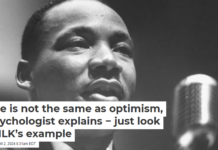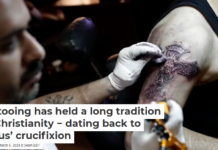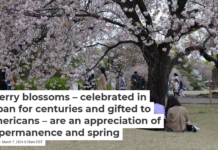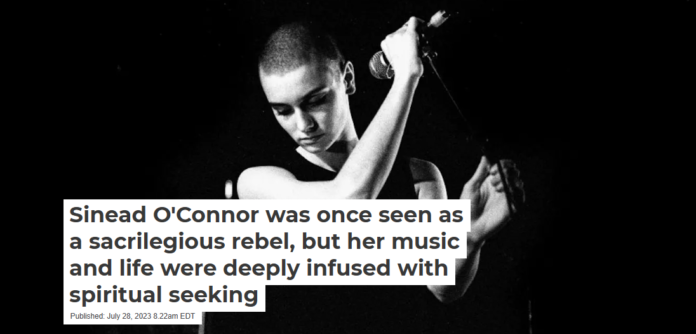

Brenna Moore, Fordham University
When news broke July 26, 2023, that the gifted Irish singer Sinead O’Connor had died, stories of her most famous performance circulated amid the grief and shock.
Thirty-one years ago, after a haunting rendition of Bob Marley’s song “War,” O’Connor ripped up a photograph of Pope John Paul II on live television. “Fight the real enemy,” she said – a reference to clerical sex abuse. For months afterward, she was banned, booed and mocked, dismissed as a crazy rebel beyond the pale.
Commemorations following her death, however, cast the protest in a very different light. Her “Saturday Night Live” performance is now seen as “invigorating,” the New York Times’ pop critic wrote, and “a call to arms for the dispossessed.”
Attitudes toward Catholicism, sex and power are far different today than in 1992, whether in New York or O’Connor’s native Dublin. In many people’s eyes, the moral credibility of the Catholic Church around the world has crumbled, and trust in faith institutions of any sort is at an all-time low. Sexual abuse, once discussed only in whispers, is now beginning to be talked about openly.
I join the chorus of voices today who say O’Connor was decades ahead of her time. But leaving it just at that, we miss something profound about the complexity and depth of her religious imagination. Sinead O’Connor was arguably one of the most spiritually sensitive artists of our time.
I am a scholar of Catholicism in the modern era and have long been interested in those figures – the poets, artists, seekers – who wander the margins of their religious tradition. These men and women are dissatisfied with the mainstream centers of religious power but nonetheless compelled by something indelibly religious that feeds the wellsprings of their artistic imagination.
Throughout her life, O’Connor defied religious labels, exploring multiple faiths. The exquisite freedom in her music cannot be disentangled from that something transcendent that she was always after.
‘Rescuing God from religion’
Religion is often thought about as discreet traditions: institutions that someone is either inside or outside. But on the ground, it is rarely that simple.
The Catholic Church had a strong hold on Irish society as O’Connor was growing up – a “theocracy,” she called it in interviews and her memoir, “Rememberings” – and for many years she called for more accountability for the clerical abuse crisis. But she was also open in her love of other aspects of the faith, albeit often in unorthodox ways. She had a tattoo of Jesus on her chest and continued to critique the church while appearing on television with a priest’s collar.
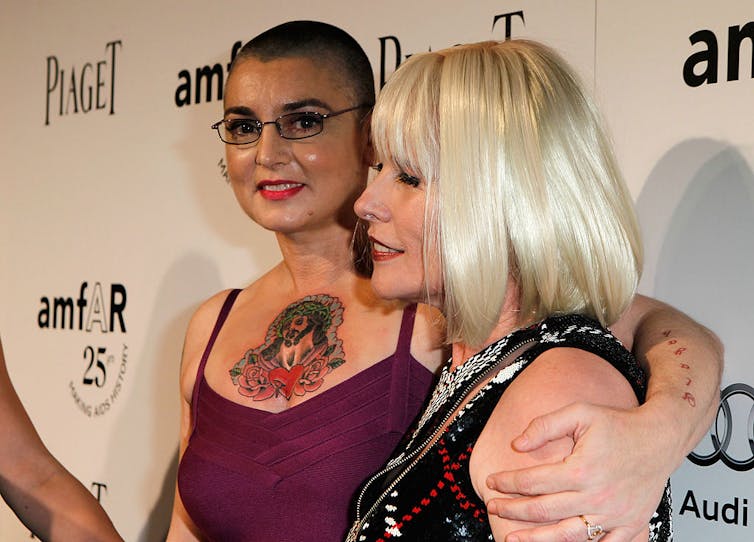
Ten years after her SNL performance, O’Connor took courses at a seminary in Dublin with a Catholic Dominican priest, Rev. Wilfred Harrington. Together, they read the prophets of the Hebrew Bible and the Psalms: sacred scriptures in which God’s voice comes through in darker, moodier, more human forms.
Inspired by her teacher, she made the gorgeous album “Theology,” dedicated to him. The album is a mix of some of her own songs inspired by the Hebrew Bible – like “If You Had a Vineyard,” inspired by the Book of Isaiah; and “Watcher of Men,” which draws from the biblical story of Job – and other tracks that essentially are sung versions of her favorite Psalms.
In a 2007 interview with Fordham University’s WFUV radio station, O’Connor said that she was hoping the album could show God to people when religion itself had blocked their access to God. It was a kind of “rescuing God from religion,” to “lift God out of religion.” Rather than preaching or writing, “music is the little way that I do that,” she said, adding, “I say that as someone who has a lot of love for religion.”
Reading the prophets
In doing so, she stood in the long line of the prophetic tradition itself.
The great Jewish thinker Rabbi Abraham Joshua Heschel’s book “The Prophets” begins with this sentence: “This book is about some of the most disturbing people who have ever lived.” Over and over, the Bible shows the prophets – the prophets who inspired “Theology” – mounting bracing assaults on hypocrisies and insincerities in their own religious communities, and not politely or calmly.
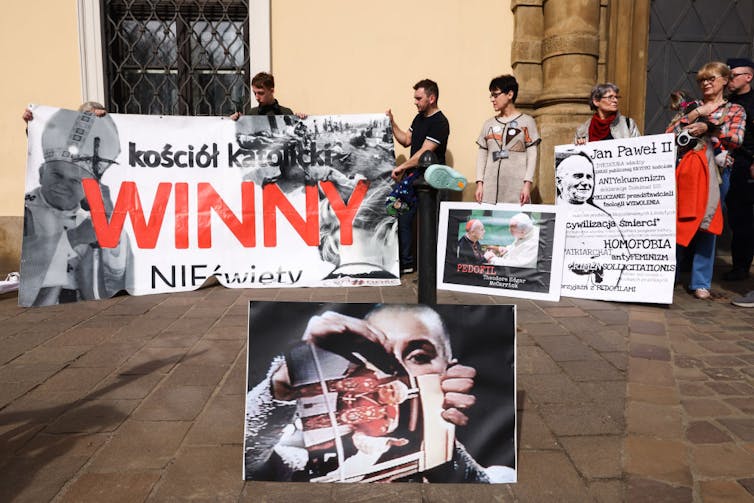
To many horrified Catholics, O’Connor’s SNL appearance and her many other criticisms of the church were blasphemous – or, at best, just throwing stones from outside the church for attention. Other fans, however, saw it as prophetic condemnation. It was not just a critique of child abuse but of church officials’ professed compassion for children – sanctimonious pieties as they covered up the abuse.
In calling this out and so much more, O’Connor was often seen as disturbing: not just the photo-of-the-pope incident, but her androgyny, her shaved head, her openness around her own struggles with mental illness. But for many admirers, as the documentary “Nothing Compares” makes clear, all this showed that she was free, and like the prophets of old, unashamed and unafraid to provoke.
Rasta to Islam
At the same time, O’Connor’s religious imagination was so much more than a complex relationship with Catholicism. Religion around O’Connor was eclectic and intense.
She was deeply influenced by Rastafarian traditions of Jamaica, which she described as “an anti-religious but massively pro-God spiritual movement.” She considered Sam Cooke’s early album with the Soul Stirrers the best gospel album ever made. She counted among her spiritual heroes Muhammad Ali – and converted to Islam in 2018, changing her name to Shuhada’ Sadaqat.
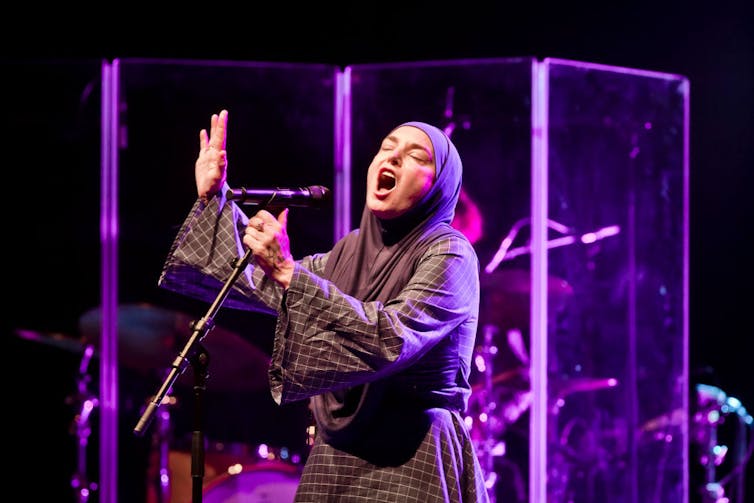
Yet O’Connor’s vision was not fragmented, as if she were constantly chasing after bits and pieces. The miracle of Sinead O’Connor is that it all coheres, somehow, in the words of an artist who refuses to lie, to hide or not say what she thinks.
When asked about spirituality, O’Connor once said that she preferred to sing about it, not talk about it – as she does in so many songs, from her luminous singing of the antiphon, a Marian hymn sung at Easter services, to her Rasta-inspired album, “Throw Down Your Arms.”
In “Something Beautiful,” a track from the “Theology” album, O’Connor speaks both to God and the listener: “I wanna make/ Something beautiful/ For you and from you/ To show you/ I adore you.”
Indeed she did. To be moved by her art is to sense a transcendence, a peek into radiance.
Brenna Moore, Professor of Theology, Fordham University
This article is republished from The Conversation under a Creative Commons license. Read the original article.




